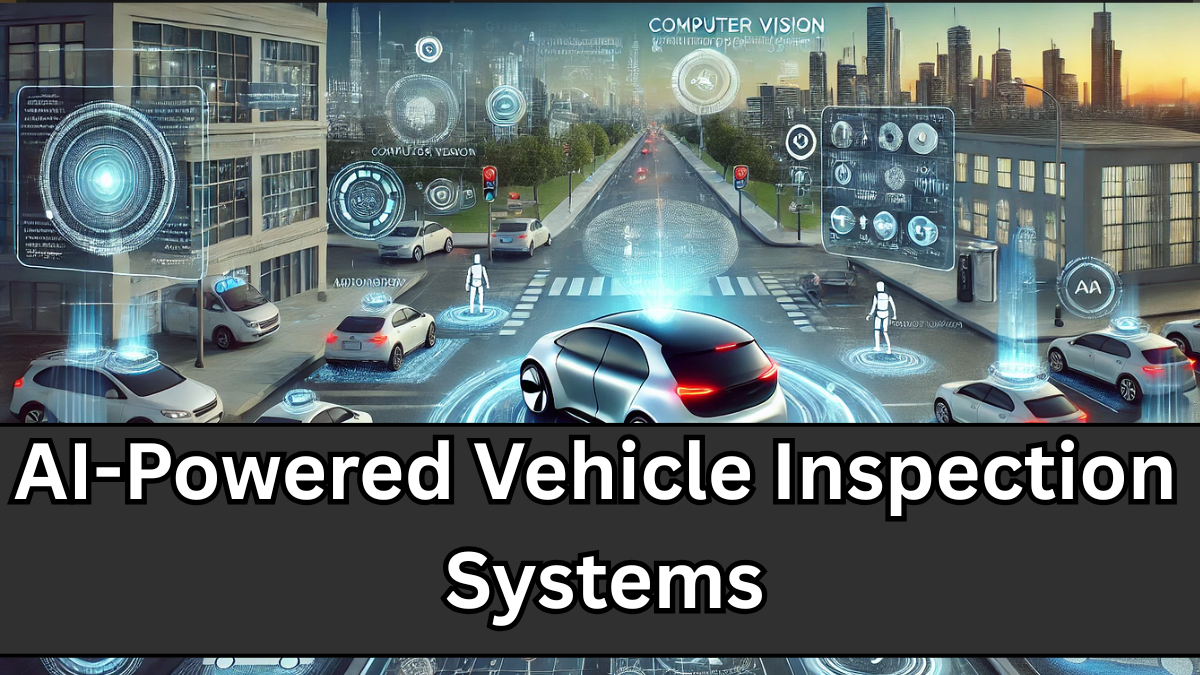In 2025, the future of automotive quality checks is rapidly evolving. Thanks to cutting-edge AI-Based Vehicle Inspection Systems, companies like RBR Innovations are transforming traditional inspection methods with unmatched precision, speed, and reliability.
These systems are reshaping how defects are spotted, reported, and resolved across automotive manufacturing, making inspections smarter and faster than ever before.

Why Traditional Vehicle Inspections Needed an Upgrade
Manual inspections, though long relied upon, have some major drawbacks:
-
Prone to human error and fatigue
-
Time-consuming processes
-
Inconsistent results across different technicians
-
Costly and labor-intensive
In a world where milliseconds and microns matter, there’s a pressing need for smarter solutions. This is where AI-Based Vehicle Inspection Systems come into play.
What Makes AI-Based Vehicle Inspection Systems Game-Changing?
AI-powered systems integrate advanced technologies like computer vision quality control, machine learning, and robotic automation to:
-
Detect minor to major defects instantly
-
Analyze surface textures, dimensions, and paint quality
-
Maintain consistent inspection standards across shifts
-
Learn from data to improve with every scan
Core Technologies Behind the Innovation
Technologies and Their Functions
| Technology | Function |
|---|---|
| Computer Vision | Captures and analyzes images to detect flaws automatically |
| Machine Learning Algorithms | Learn from inspection data to enhance future detections |
| Robotics & Automation | Handle physical positioning, camera movements, and actions |
| Data Analytics | Tracks trends and reports quality assurance data |
This powerful combination enables computer vision quality control to reach levels of accuracy that are difficult for human inspectors to match.
Benefits of RBR’s AI-Powered Vehicle Inspection System
RBR Innovations has tailored its 2025 product lineup to address every key concern in the auto industry:
-
Increased Efficiency – Inspections take seconds, not minutes
-
Better Accuracy – Detects minute defects invisible to the naked eye
-
Lower Costs – Fewer recalls and reduced reliance on manual labor
-
Real-Time Feedback – Instant alerts and data logging for fast interventions
-
Scalable Solutions – Customizable for different types of vehicles and production lines
Use Cases Across the Automotive Ecosystem
Where AI-Based Vehicle Inspection Systems Make a Difference
| Use Case | AI-Based Solution |
|---|---|
| Assembly Line Inspection | Detects misalignments, gaps, scratches |
| Paint and Coating Checks | Identifies inconsistencies and air bubbles using vision tech |
| Pre-Delivery Quality Control | Full-body scans for final assurance before vehicles ship out |
| Parts & Component Testing | Verifies structural integrity of parts like doors and engines |
The Future: Smarter Vehicles, Smarter Inspections
As automotive design becomes more complex, especially with EVs and autonomous vehicles, inspection methods must evolve. AI-based systems allow automakers to keep up with increasingly high standards.
And as AI-Based Vehicle Inspection Systems continue to learn and adapt, they’ll become even more indispensable, leading to safer, higher-quality vehicles on the road.
FAQs
Q1. What is an AI-Based Vehicle Inspection System?
An AI-Based Vehicle Inspection System uses artificial intelligence, especially computer vision, to automatically detect flaws, defects, or irregularities in vehicles during production or before delivery.
Q2. How does computer vision quality control work in this context?
Computer vision quality control involves capturing high-resolution images of vehicle surfaces or components and using AI algorithms to identify inconsistencies or defects.
Q3. Can this system replace human inspectors entirely?
While AI systems dramatically reduce human error and workload, they are usually integrated with human oversight for final validation and complex judgment calls.
Q4. Is RBR’s system customizable for different vehicle types?
Yes, RBR Innovations designs modular solutions that can be adapted for a variety of vehicle sizes, manufacturing processes, and quality control needs.
Click here to learn more
